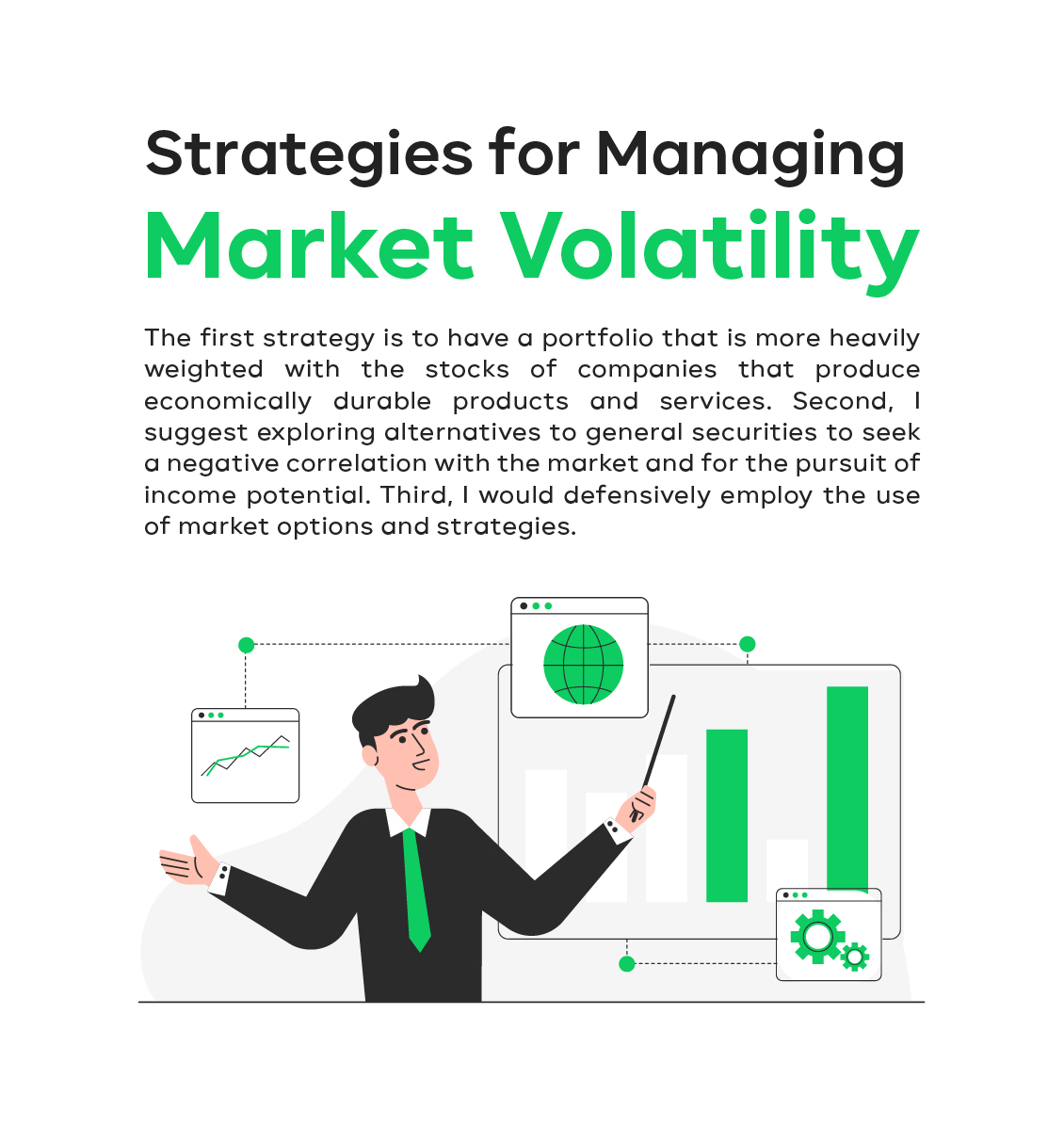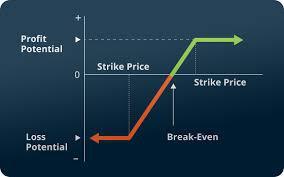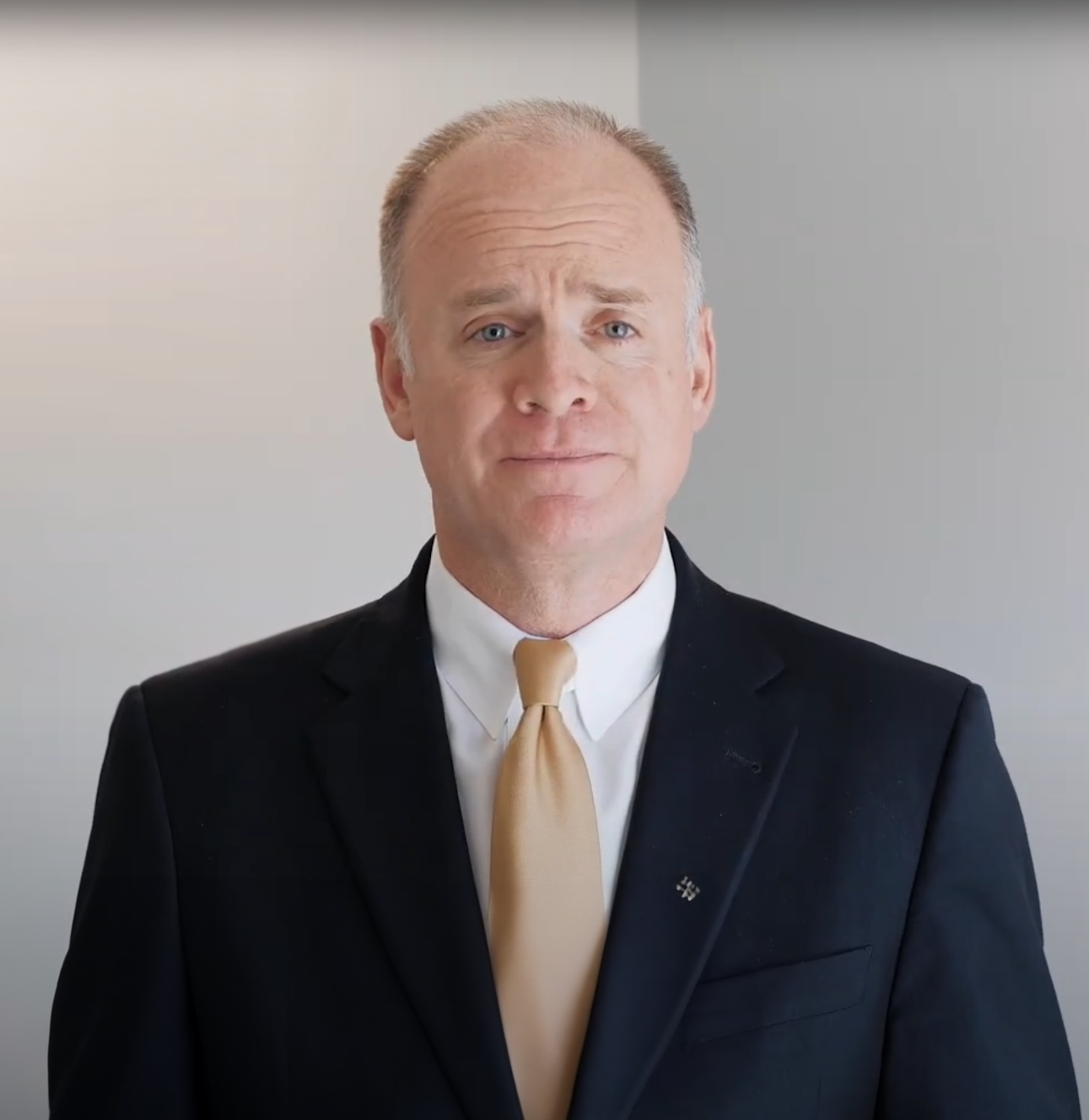
Three Strategies to Help Offset Market Volatility
Yes, the stock market is volatile right now, and U.S. inflation is not helping any, but there are three strategies that you can use to help offset that volatility. This article will introduce those strategies, so you’ll know if they are worth pursuing.
- The first strategy is to have a portfolio that is more heavily weighted with the stocks of companies that produce economically durable products and services.
- Second, I suggest exploring alternatives to general securities to seek a negative correlation with the market and for the pursuit of income.
- Third, I would defensively employ the use of market options and strategies.
As you read these, keep in mind that I would strongly advise that anyone interested in what we’re about to cover and looking to create a sound financial plan first consult with their investment professional. Actionable investment advice for good portfolio management can only be rendered following a comprehensive planning effort through which objectives are identified, risk tolerance is defined, and a basis for investment direction is determined. With markets in flux, retirement planning strategies may need to include some of these suggestions.

Click the video for additional footage on:
Strategies for Managing Market Volatility?
Click the video to see how it applies to you.
(1) Sound Investment Strategy for Financial Stability: Focus on the Necessities
An economically durable commodity is something that is consumed consistently throughout changing economic cycles. In general, these include basic food staple items, basic pharmaceuticals, utilities, and other similar items. Tobacco and alcohol are also often durable staples during periods of economic softness.
In this scenario, I look for companies that manufacture products that will be consumed durably, that can be obtained at a very low forward price to earnings multiple, and that will also provide a nice dividend back into the portfolio.
During times of enhanced market volatility, I have placed a great value on steady, dependable streams of dividend income. The dividend can change depending on the stock’s purchase price, while the income, over time, provides stability to the portfolio as markets re-price the risk of changing economic conditions.
In addition to dividend income from equities, I would also like to mention that sleeves of fixed income should be evaluated for creditworthiness and sector exposure. With the Federal Reserve in quantitative tightening mode, I believe that the risk of shorter-term corporate issues, with higher credits of quality, could offer greater buoyancy to a portfolio than treasuries. Indeed, treasuries seem to be much more volatile in part because the Federal Reserve had previously been the single largest central purchaser of them over the last two years thanks to the use of printed money.

(2) Different Options for Investment Income and Retirement Income
Today, the Federal Reserve is no longer the largest single purchaser of US treasury debt, and there has been a great amount of price distortion resulting from the expansion of the Federal Reserve’s balance sheet. To that end, for the first time in 50 years, treasuries and equities are moving in a positively correlated way. In reaction to this, I would seek to generate income from debt securities from sources outside of government issues.
Typically, when we talk about alternative investments, this generally refers to instruments such as market-linked certificates of deposit, real estate investment trusts, limited partnerships, and structured notes.
Keep in mind that all investments carry risk, including loss of principal. Market-linked CDs are not FDIC insured, and these products are complex and may not be appropriate for all investors.
When I have employed alternatives such as these, it has been to streamline portfolio holdings and to build a “bridge” between dedicated fixed interest positions and variable equity positions. These can offer unique sources of negative correlation income and hedges against market volatility.
However, I would also include other tools in this category. Some types of life insurance, for example, can offer guarantees of principal and tax-sheltered interest. Often, we look to an instrument that we need anyway for indemnification, and sometimes long-term care. In some cases, it can serve as an external complement to what we maintain in fixed interest securities. Think of it as an external quasi-bond sleeve. Sometimes, people overlook the tax preferential characteristics of life insurance, and it never occurs to them that it could also offer a principally guaranteed offset when viewed holistically. Equity-indexed annuities could serve a similar role if there is no need for life insurance.
(3) Call Options: A Tool to Limit Losses
Market options are instruments that allow someone to control shares of an underlying stock. A call option provides the ability to purchase a given number of shares for a predetermined price over a specific period, whereas a put option provides the ability to sell shares at a predetermined price over a specific period.
For example, if someone purchased shares of ABC company but wanted to limit their downside risk, then we could purchase a put option with a strike price that reflected a 15% floor. If the underlying stock dropped below the 15% threshold, then the put option could be exercised to sell that stock at the predetermined price where the 15% barrier was established.
Within other strategies, we can build a collar around a stock position to generate income into the portfolio while addressing downside risk.

In closing, we’ve often talked about planning coming first, followed by execution. Objective-driven investment plans should be governed by a holistic financial plan, and remaining true to that plan should be the overarching goal. Having said that, many people have asked lately about methods for addressing risks at the execution level, so I hope this high-level overview is helpful.
Either way, I encourage anyone interested in financial planning in Alabama to talk with your professional financial planner or investment advisor about what might be most suitable and appropriate for your unique situation.
*David R. Guttery, RFC, RFS, CAM, is a financial advisor and has been in practice for 31 years. He is the president of Keystone Financial Group in Trussville, Ala. David offers products and services using the following business names: Keystone Financial Group – insurance and financial services | Ameritas Investment Company, LLC (AIC), Member FINRA / SIPC – securities and investments | Ameritas Advisory Services – investment advisory services. AIC and AAS are not affiliated with Keystone Financial Group. Information provided here is gathered from sources believed to be reliable; however, we cannot guarantee their accuracy. This information should not be interpreted as a recommendation to buy or sell any security. Past performance is not an indicator of future results.







